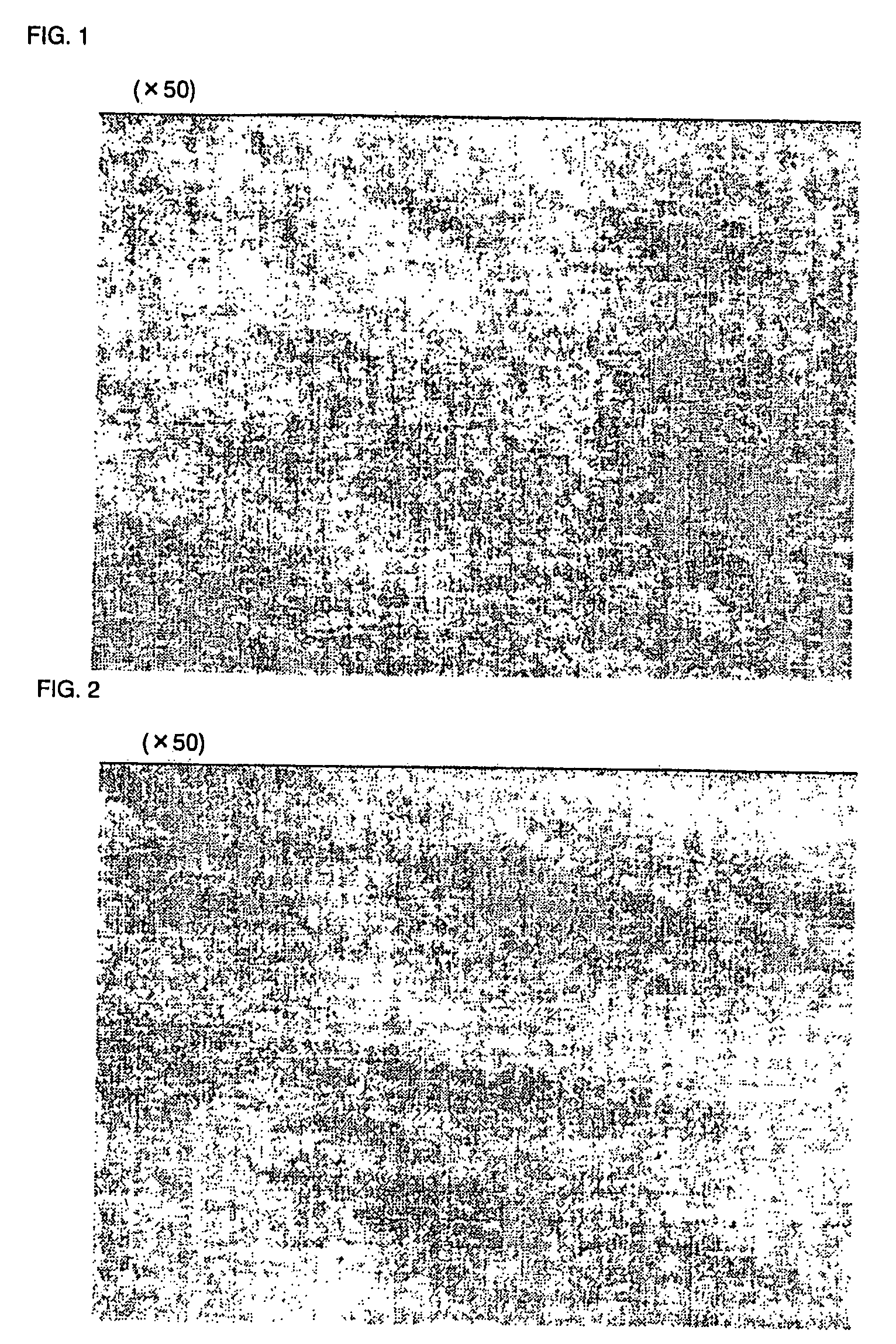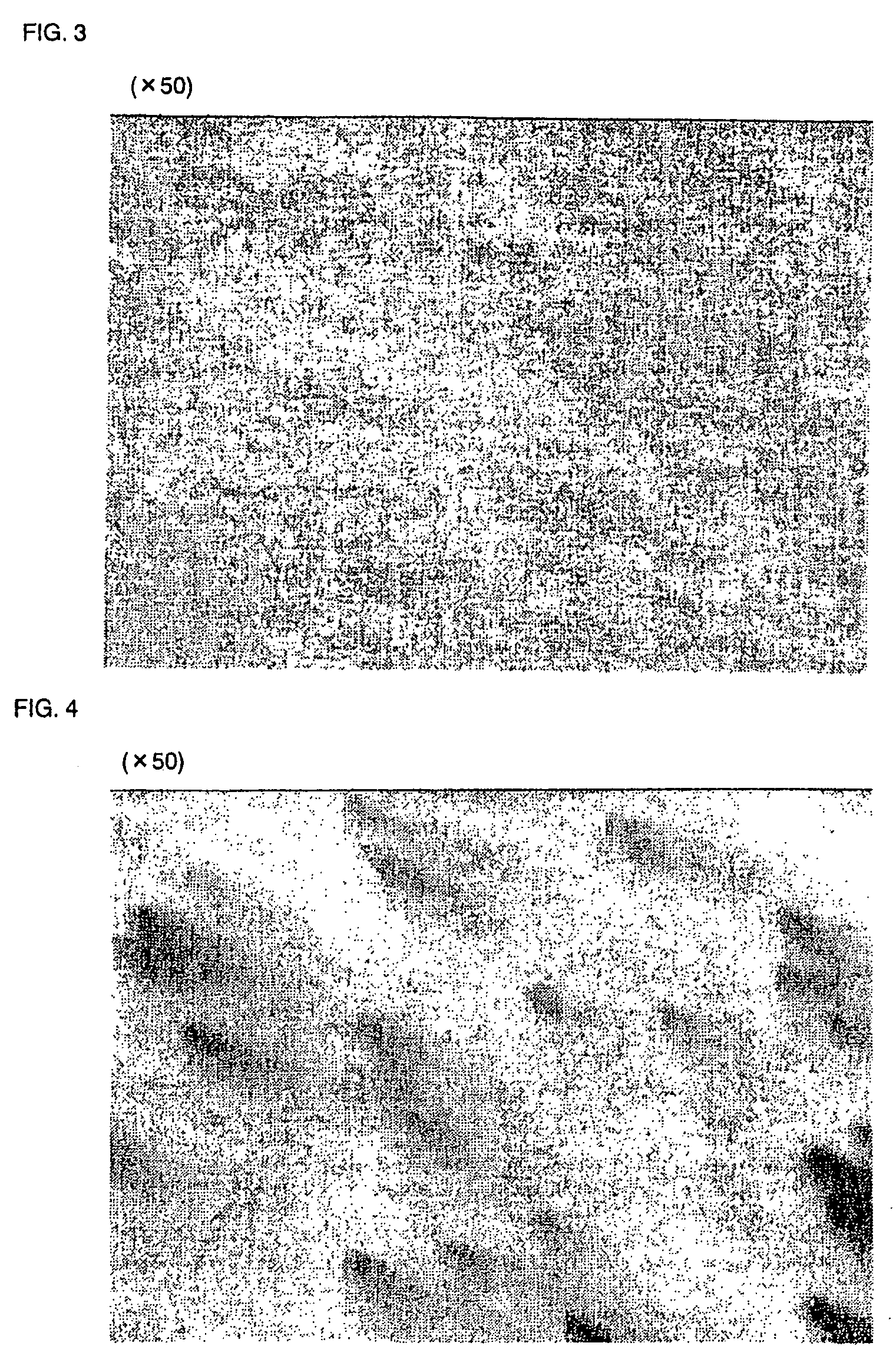Rolled Copper or Copper Alloy Foil with Roughened Surface and Method of Roughening Rolled Copper or Copper Alloy Foil
a technology of rolled copper or copper alloy foil and surface roughening, which is applied in the direction of chemistry apparatus and processes, cores/yokes, transportation and packaging, etc., can solve the problems of significant deterioration in the etching properties of copper foil, difficult etching at a high aspect ratio, and undercutting during the etching process, so as to reduce craters, improve the effect of characteristics, and reduce the effect of crater siz
- Summary
- Abstract
- Description
- Claims
- Application Information
AI Technical Summary
Benefits of technology
Problems solved by technology
Method used
Image
Examples
examples
[0077]Examples of the present invention are now explained. These Examples merely illustrate a preferred example, and the present invention shall in no way be limited thereby. In other words, all modifications, other embodiments and modes covered by the technical spirit of the present invention shall be included in this invention. Incidentally, the Comparative Examples are indicated in the latter part for comparison with the present invention.
example 4
[0108]Next, the rolled copper foil subject to base plate as with Examples 1 to 3 above was subject to roughening treatment by way of copper plating treatment using plating baths additionally containing nickel sulfate (Example 4) or phosphorous acid (Example 5).
[0109]The foregoing conditions were used as the copper roughening plating bath and roughened copper plating conditions, that is, in the copper-nickel alloy plating treatment, 15 g / L of Cu ion concentration, 2 g / L of Ni ion concentration, 50 g / L of sulfuric acid, electrolytic solution temperature of 25° C., and current density of 50 A / dm2. The plating thickness was roughly 5000 μg / dm2.
[0110]As the additive, sodium dodecyl sulfate was used by 20 wtppm. Consequently, the crater count was the same as Example 1 at 0.14 craters / mm2. As evident from the foregoing explanation, the roughening plating of Example 4 also yielded the same result of reducing craters as with Examples 1 to 3.
example 5
Copper-Nickel-Phosphorous Alloy Plating Treatment
[0111]Copper-nickel-phosphorous alloy plating treatment was performed under the conditions of 15 g / L of Cu ion concentration, 2 g / L of Ni ion concentration, 1 g / L of P ion concentration, 50 g / L of sulfuric acid, electrolytic solution temperature of 25° C., and current density of 50 A / dm2. The plating thickness was roughly 50000 μg / dm2. As the additive, sodium dodecyl sulfate was used by 20 wtppm.
[0112]Consequently, the crater count was the same as Example 1 at 0.14 craters / mm2. As evident from the foregoing explanation, the roughening plating of Example 5 also yielded the same result of reducing craters as with Examples 1 to 3.
PUM
| Property | Measurement | Unit |
|---|---|---|
| Temperature | aaaaa | aaaaa |
| Density | aaaaa | aaaaa |
| Density | aaaaa | aaaaa |
Abstract
Description
Claims
Application Information
 Login to View More
Login to View More - R&D
- Intellectual Property
- Life Sciences
- Materials
- Tech Scout
- Unparalleled Data Quality
- Higher Quality Content
- 60% Fewer Hallucinations
Browse by: Latest US Patents, China's latest patents, Technical Efficacy Thesaurus, Application Domain, Technology Topic, Popular Technical Reports.
© 2025 PatSnap. All rights reserved.Legal|Privacy policy|Modern Slavery Act Transparency Statement|Sitemap|About US| Contact US: help@patsnap.com



